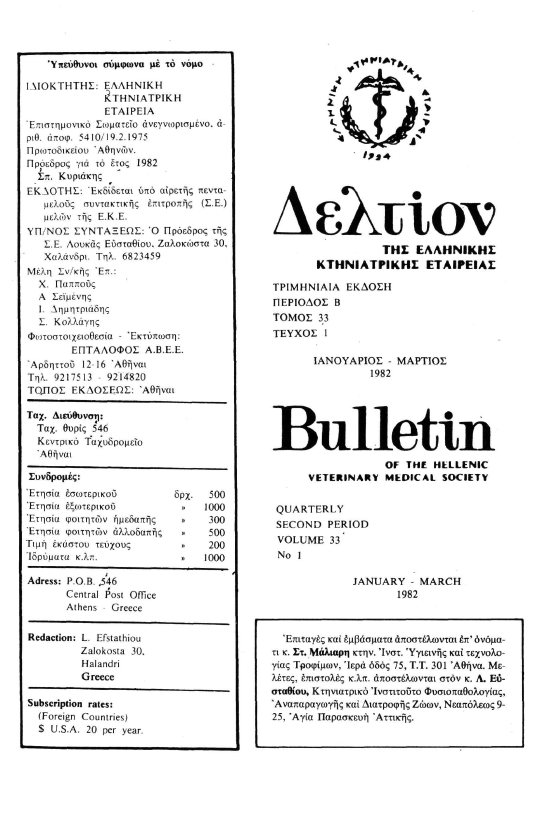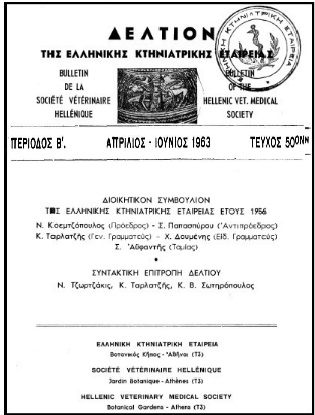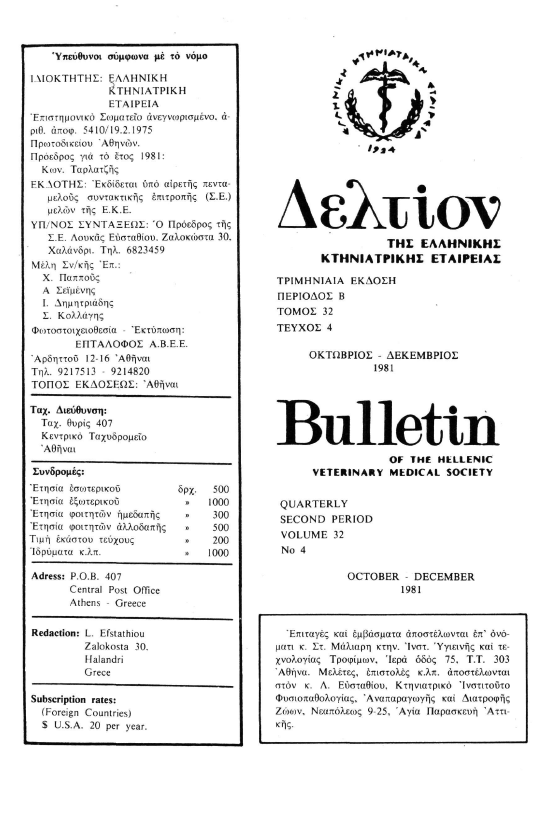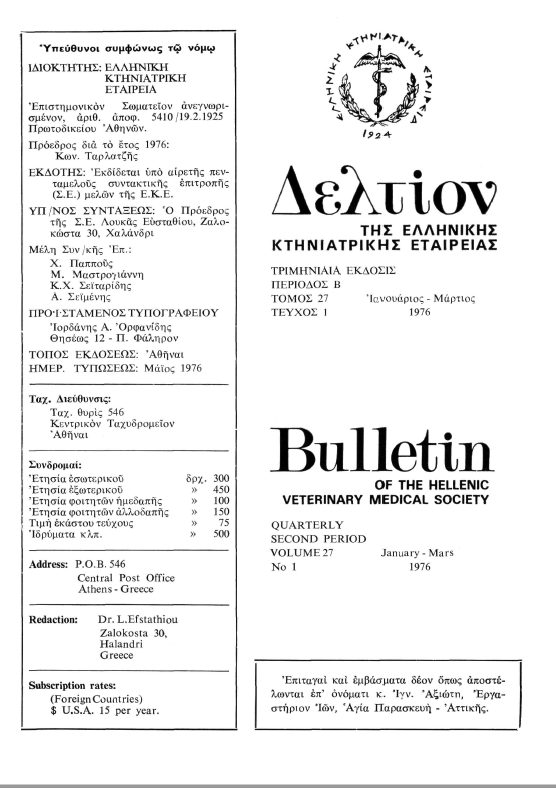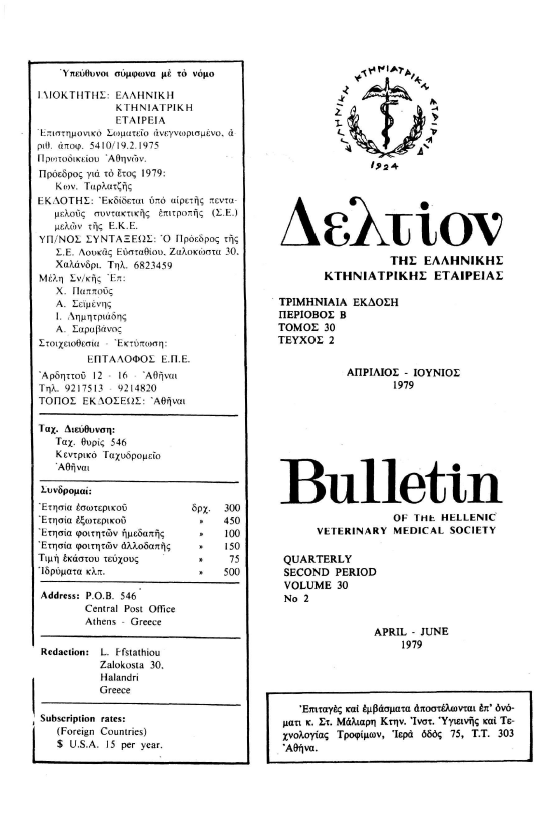Ή γονιμότητα σπέρματος τράγου υστέρα άπό συντήρηση 11 ετών σέ υγρό άζωτο ( I96°C)
Аннотация
1. Διενεργήθηκε τεχνητή σπερματέγχυση σέ 30 συνολικά αίγες φυλής Saanen μέ κατεψυγμένο σπέρμα τράγου, πού είχε συντηρηθεί σέ υγρό άζωτο (—196°C) για περίοδο 11 ετών. Άπό τίς αίγες αυτές οί 16 (53,33%), συνέλαβαν μέ τήν πρώτη καί οί 4 (28,57%) μέ τη δεύτερη σπερματέγχυση, δηλαδή συνέλαβαν συνολικά 20 ζώα (66,66%). Άπό τους τοκετούς πού ακολούθησαν, οί 9 ήσαν μονόδυμοι, ένώ οί υπόλοιποι 11 ήσαν δίδυμοι, δηλ. συνολικά γεννήθηκαν 31 ερίφια. Ό αριθμός τών αρσενικών εριφίων ανήλθε σέ 26 (83,87%), ένώ τών θηλυκών σέ 5(16,13%). 2. Άπό 54 αίγες τής ίδιας φυλής πού υποβλήθηκαν σέ τεχνητή σπερματέγχυση μέ τό ίδιο σπέρμα αμέσως μετά άπό τή κατάψυξη, 11 χρόνια νωρίτερα, συνέλαβαν οί 38 (70,37%). - 3. Συμπεραίνεται δτι κατά τή διάρκεια τής συντηρήσεως τών 11 ετών σε υγρό άζωτο, ή γονιμότητα του σπέρματος τράγου μειώθηκε κατά 3,7%. Ή διαφορά αυτή δέν είναι στατιστικώς σημαντική.
Article Details
- Как цитировать
-
ΣΑΜΟΥΗΛΙΔΗΣ Σ., ΦΟΥΚΟΣ Α., & ΤΣΑΚΑΛΩΦ Π. (2019). Ή γονιμότητα σπέρματος τράγου υστέρα άπό συντήρηση 11 ετών σέ υγρό άζωτο ( I96°C). Journal of the Hellenic Veterinary Medical Society, 33(1), 53–55. https://doi.org/10.12681/jhvms.21521
- Выпуск
- Том 33 № 1 (1982)
- Раздел
- Articles

Это произведение доступно по лицензии Creative Commons «Attribution-NonCommercial» («Атрибуция — Некоммерческое использование») 4.0 Всемирная.
Authors who publish with this journal agree to the following terms:
· Authors retain copyright and grant the journal right of first publication with the work simultaneously licensed under a Creative Commons Attribution Non-Commercial License that allows others to share the work with an acknowledgement of the work's authorship and initial publication in this journal.
· Authors are able to enter into separate, additional contractual arrangements for the non-exclusive distribution of the journal's published version of the work (e.g. post it to an institutional repository or publish it in a book), with an acknowledgement of its initial publication in this journal.
· Authors are permitted and encouraged to post their work online (preferably in institutional repositories or on their website) prior to and during the submission process, as it can lead to productive exchanges, as well as earlier and greater citation of published work.

